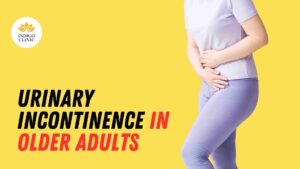


What is overactive bladder?
Overactive bladder (OAB incontinence urge) is a condition where there is a frequent feeling of needing to urinate to a degree that it negatively affects a person’s life. The frequent need to urinate may occur during the day, at night, or both. If there is loss of bladder control then it is known as. More than 40% of people with overactive bladder have incontinence. Conversely, about 40% to 70% of urinary incontinence is due to overactive bladder.Overactive bladder is not life-threatening, but most people with the condition have problems for years.
Signs and symptoms:
Urgency – is considered the hallmark symptom of OAB
Urinary frequency- is considered abnormal if the person urinates more than eight times in a day.This frequency is usually monitored by having the person keep a voiding diary where they record urination episodes. The number of episodes varies depending on sleep, fluid intake, medications, and up to seven is considered normal if consistent with the other factors.
Nocturia- symptom where the person complains of interrupted sleep because of an urge to voidand, like the urinary frequency component, is affected by similar lifestyle and medical factors.
Urge incontinence- form of urinary incontinence characterized by the involuntary loss of urine occurring for no apparent reason while feeling urinary urgency as discussed above.
Causes:
The cause of OAB is unclear. It is often associated with overactivity of the detrusor urinae muscle, a pattern of bladder muscle contraction observed during urodynamics. It is also possible that the increased contractile nature originates from within the urothelium and lamina propria, and abnormal contractions in this tissue could stimulate dysfunction in the detrusor or whole bladder.
Risk factors:
obesity, caffeine, and constipation. Poorly controlled diabetes, poor functional mobility, and chronic pelvic pain may worsen the symptoms.
Diagnosis:
Person’s signs and symptoms and by ruling out other possible causes such as an infection. Urine culture may be done to rule out infection.The frequency/volume chart may be maintained and cystourethroscopy may be done to exclude tumor and kidney stones . If there is an underlying metabolic or pathologic condition that explains the symptoms, the symptoms may be considered part of that disease and not OAB.
Management:
Behavioural therapy
Lifestyle modification
Antimuscarinic drugs (darifenacin , hyoscyamine , oxybutynin , Tolterodine, solitenAvon, toospium, Fesoterodine)
Reference:
1 Gormley EA, Lightner DJ, Faraday M, Vasavada SP (May 2015). “
2 Stewart F, Gameiro LF, El Dib R, Gameiro MO, Kapoor A, Amaro JL (December 2016).
3 Abrams, Paul (2011)
4 Lightner, Deborah J.; Gomelsky, Alexander; Souter, Lesley; Vasavada, Sandip P. (September 2019).
5 Moro C, Uchiyama J, Chess-Williams R (December 2011)
